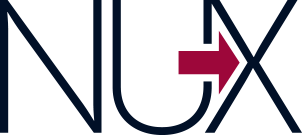
I thrive on solving interoperability problems.
The maturation of Design Thinking in successful organizations has opened the door for creative problem solving as a process. Whatever your flavor of Agile or Lean UX, there is going to be a level of planning, exploration, problem identification, ideation, and ultimately, delivery of a solution. These solutions are rarely linear. Form may follow function, but focus has shifted to designing within an ecosystem. We’re often considering the needs of multiple user roles and organizational stakeholders. Understanding how things work together on a physical level is only the beginning. Users expect digital solutions to work with other products and people reliably and efficiently. Approaching design with an expanded view of a product's potential applications has allowed me to research and design experiences that not only add value, but provide differentiation that can translate into competitive advantage.
Teaching has been more rewarding than I ever expected.
I began teaching for several reasons. I had a strong desire for community engagement, I needed a way to stay busy and keep my skills sharp, and wanted to better prepare students for the realities of careers in UX. Many new hires I'd worked with were surprised by the demands of high-velocity design teams. Since then, I've made it my mission to influence the way my students (and mentees) approach problems. I help them create research methodologies and instruments to capture exactly the kind of data required to understand a user's motivations. My students learn when to leverage their design sensibility, and when to seek help where domain knowledge is lacking. The key to all of this is being encouraged to step outside of their comfort zone long enough to grow through the experience, and then returning to a working environment that grants creative license for self-expression. It's all about connecting with the work and each other. Seeing students land their first internships, full-time roles, (and a few getting admitted to prestigious university HCI programs) has made me so proud I can't describe it in words. Safe to say all the clichés are true.
Design research in Agile environments is more difficult to execute (well) than academic research.
As someone who completed a terminal degree at a blistering pace, I'm familiar with all-nighters and crunching data until you can't see straight. Yet I'd argue that for all the rigor required to produce peer-reviewed research in academia, it's much harder to execute valid UX/Design research. The rapid turnarounds required from an Agile design team impose all manner of threats to the validity of any research. Small sample sizes. Accelerated test schedules. Limited budgets. Barriers to user access. The list goes on, and ultimately it requires not only a mastery of available research tools, but the ability to think creatively to control variability while determining the "what" and the "why" behind user behaviors (in 2 weeks or less quite often). Capturing reliable user data while simultaneously developing lasting empathy takes commitment and a desire to push yourself to look beyond the first viable solution. I love this topic, and if we're fortunate enough to chat I’m happy to share more about my philosophy in merging the rigor of academia with the demands of Agile product development. I’ve spoken on this topic in 2018 and 2019, and continue to evangelize the need to push the discipline by balancing iterative design with qualitative insights, analytics, and customer feedback.

